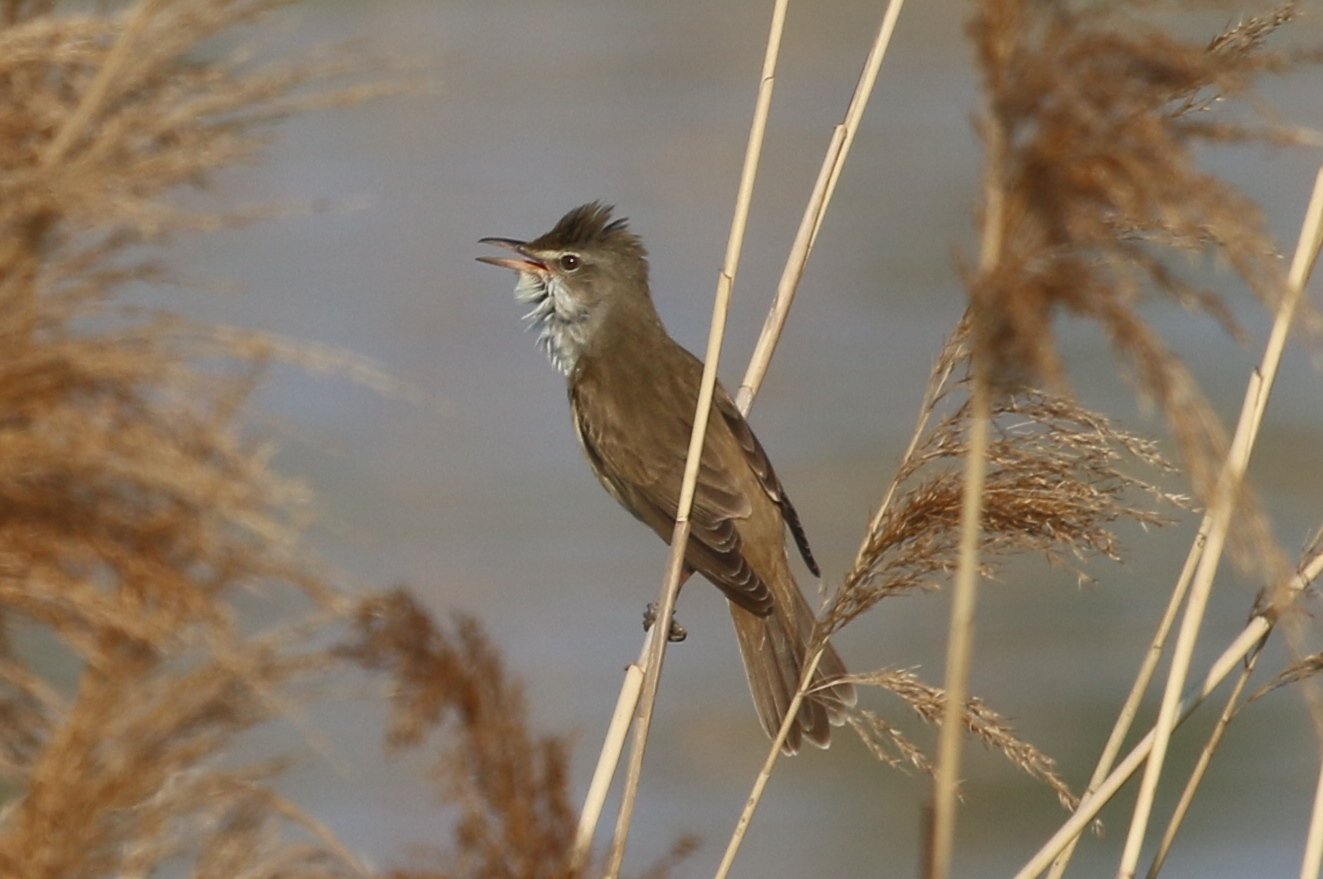
If, by a chain of peculiar events or by purposeful decision, you find yourself somewhere in central Europe, you sooner or later will not be able to avoid seeing a little bird, usually the size of a House Sparrow or smaller, with a slender bill, a rather vertical posture, which will be hopping through some dense vegetation, and which you will have to accept as being a WARBLER. There’s no way around it as the various species are reasonably common, and you will surely want to identify them. But boy, do Euro warblers have a bad reputition for being notoriously difficult to identify. This is especially the case amongst North American birders, who are spoiled rotten by our warblers’ colourful namesakes. However, let me assure you they really ain’t so tough. I mean seriously. If you are used to separating Willow from Alder Flycatchers by visual field marks alone, have no difficulties telling a hybrid Lesser Black-backed x American Herring Gull from a Yellow-legged Gull, and distinguishing between Chimney and Vaux’s Swifts is a piece of cake to you, then you have no reason for fearing the Old Europe’s warblers. I’ll show you how simple their identification really is, and the first step is the easiest one of them all:
Check the bird’s overall colouration and assign it to one of the following three categories:
- If the overall colouration is a combination of at least two colours, like grey, brown, black, or white, the bird in front of you is a Sylvia-Warbler and its identification is as straight-forward as North American fall warblers. So easy a group it is not even worth blogging about.
- If the overall colouration is green, you have found yourself a Leaf Warbler of the genus Phylloscopus, or a Warbler of the genus Hippolais. I’ll leave those for a possible future post.
- If it is brown, you have found yourself a Reed Warbler of the genus Acrocephalus, or a member of the genus Locustella. This group is so incredibly easy that even I have decided to elaborate on their identification in this post.
A very good look at a warbler out in the open – a Grasshopper Warbler if you really need to know
So we have a brown, slender-billed bird in font of us which we now know is a brown warbler, either of the genus Acrocephalus or Locustella. What is next? Well, just another easy check:
- Does it have stripes anywhere on its body?
YES: If it does have stripes, mostly on the back but maybe also a little bit on the breast or flanks, you’re nearly done. No, seriously, a brown warbler with stripes in central Europe really means you are either looking at a Grasshopper Warbler or a Sedge Warbler. The only thing to focus on then is the head pattern and flanks & undertail coverts. Striped flanks and undertail coverts and a rather uniformely brown head mean you have physically seen a Grasshopper Warbler, which ain’t such an easy thing to do as they live very concealed lives. If the flanks and undertail coverts are plain, yet the head shows a clear pale supercilium and a very dark lateral crown stripe that is so broad it essentially creates a dark cap, you are faced with the other one, the nice Sedge Warbler.
Sedge Warbler (left) and Grasshopper Warbler (right – duh!)
Of course, there are several other brown warblers with stripes, such as the Aquatic Warbler, or the Lanceolated Warbler. However, these are so rare in most of Europe that thinking you are looking at one essentially means you are fooling yourself and should return to considering Sedge and Grasshopper Warblers again. Problem solved, no questions asked.
NO (the stripes question): Okay, it does get a bit harder now. Because you see, the first step, where we distinguish between green, brown, and grey/ white/ brown/ black, is an essential one. If you make a mistake here, especially in distinguishing brown from green, you are going down the wrong track without realizing it and will end up in complete confusion and utter nonsense. Mistaking brown for green isn’t a problem when your warbler is striped because there aren’t any striped green warblers in Europe. But in unstriped warblers, you really want to be sure. Therefore, the first thing to check when looking at an unstriped brown warbler is whether it really is a brown warbler.
This is a Willow Warbler (Phylloscopus trochilus) and not a brown bird. This is green!
Okay, so let us pretend for a moment we are totally sure about looking at an unstriped brown warbler – really brown. What’s next? Well, we now want to separate Locustella from Acrocephalus warblers, and this is done by checking the …
- Shape of the folded wing and length of undertail coverts
The Locustella warblers have a very neat feature that is surprisingly obvious when you get to see them in a lateral view: the outer primaries are strongly curved, creating an overall curved folded wing. Seriously, this is cool. Furthermore, their undertail coverts are nearly as long as their tail feathers. I find the latter a rather difficult feature to check because there are only two scenarios that reveal the undertail coverts: we see the bird facing us – but then the vegetation the bird is sitting on (twig, reed blade) mostly conceals the undertail coverts, or the bird is ducking prior to jumping / flying off, raising the tail for a split second – which is an incredibly short time to check for any ID feature. Now, if the bird does not have an obviously curved folded wing, we don’t really need to check the length of the undertail coverst since we know we are looking at an Acrocephalus warbler. If however the wing is curved, there’s no way around it: we are looking at either a Savi’s or a River Warbler, and the two are best distinguished by the pattern of their undertail coverts. Plain / unmarked in Savi’s and with distinct pale tips in River. And since River Warbler is an incredibly neat species (aka difficult to get on your life list), it sure is worth the effort of peeking at its undies.
A Savi’s Warbler, showing the curved folded wing but – surpsise – not giving away the pattern of its undertail coverts
By now we have almost made it through the brown warblers: we’ve made sure the warbler is brown (which the bird is), checked for stripes (which the bird has not), and are positive the wing isn’t obviously curved. This leaves us with the unstriped Acrocephalus warblers, Europe’s ultimate brown warblers (and aren’t you glad you’re here), and specifically the Great Reed Warbler, Blyth’s Reed Warbler, Marsh Warbler and Eurasian Reed Warbler. Now, it is perfectly okay that your hands are starting to feel sweaty, and we therefore should first go for an easy elimination to keep calm:
- Is the bird only the size of a House Sparrow or does it approach a Turdus-Thrush
If it is thrush-sized, has an obvious dark loral stripe and a rather well-develloped pale supercilium, and if it kicks butt overall, you’re lucky because you are looking at the truly Great Reed Warbler, which you can see at the top of this post and of which Corey has a few pictures here.
If however the bird is rather small, you know two things: one – you should have gone birding somewhere else, and two – you need to check the primary projection.
Amongst the three species we are left with now (Blyth’s, Marsh and Reed), Blyth’s has a very short primary projection, which is in the range of 50 to 70 %. Eurasian Reed and Marsh’s primary projection is considerably larger, at 70-100 % and 100 %, respectively. Therefore, this feature alone is quite a safe way of sorting out Blyth’s, but a few supporting field marks should also be checked: extend of pale supercilium (restricted to before the eyes in Blyth’s, usually longer in the other two), colouration of tertials (almost unifrom in Blyth’s, usually with pale margins in the others), and colouration of legs (usually rather dark in Blyth’s, paler in the others).
If however the primary projection is more than 70 %, you are faced with either a Marsh or Euro Reed. And here’s the catch: all field marks, be it primary projection, head pattern, markings on tertials etc., completely overlap in these species, and it is very doubtful they can safely be separated in the field on visuals alone. This may sound tough, but it really makes it very easy. Essentially, you have two options:
- Option one: Base your identification on your specific list needs. If you already have Reed but need Marsh, then surely what you are looking at must be Marsh. Or vice versa. And you know what? No one will be able to prove you wrong! Heck, even bird banders / ringers get around 7 % of the Reed Warblers they handle wrong!
- Option two: abandon bird
.
I am pretty sure this is a migrant Blyth’s, seen in Kazakhstan in May. The primary projection appears rather short as does the supercilium, and I really needed Blyth’s for my year list. Good enough.
.


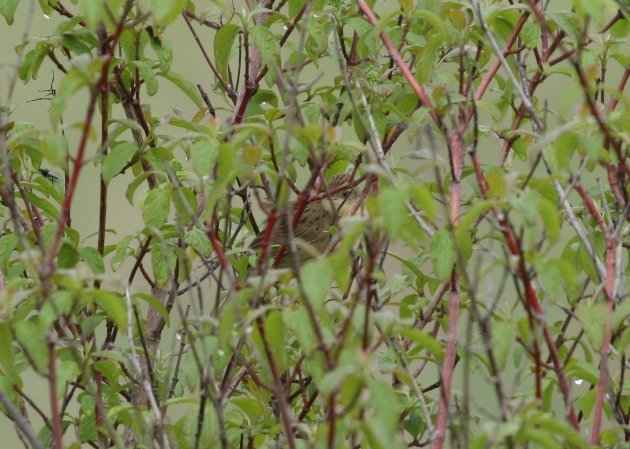
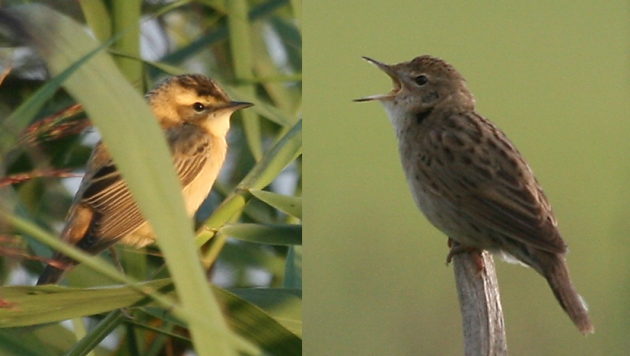
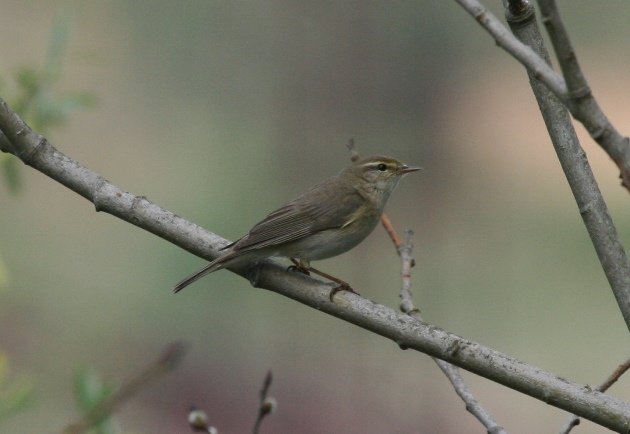
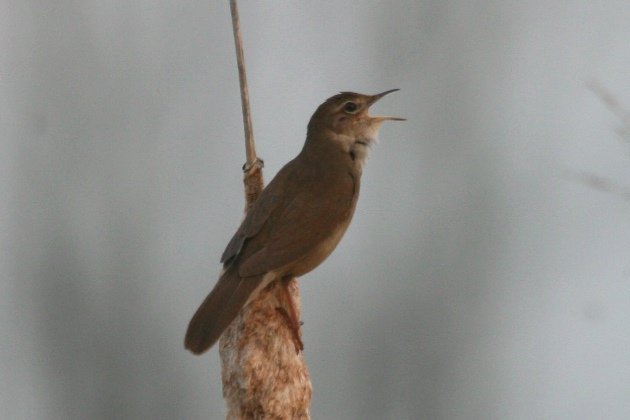












This is a super post, Jochen. If I ever bird central Europe, I’m printing it out and taking it along. It only needs one more thing: a flow chart. A great big colorful (brown, gray, black and white, like the birds) flow chart.
I love how the post that teaches how to identify warblers ends the way it did.
How do Europeans stick with birding? I think I would go nuts. Then again, Empids.
A great post that I printed and put away for next spring. The cryptic lack of coloration on European warblers is very frustrating when trying to ID several of the species in my neck of Germany. I also would welcome a flow chart – in exchange for a quality bottle of Franken wine!
I’m a bit late to the party but I went to Italy last summer and I have two warblers I can’t ID.
https://www.flickr.com/photos/saphine/14784644269/in/set-72157646579673126
https://www.flickr.com/photos/saphine/14784722298/in/set-72157646579673126
I was thinking Sardinian for the first and Subalpine for the second, but it’s really confusing. They were taken on Isloa d’Elba. They were making a lo of wren or kinglet like noises (harsh ‘chht chht chht’, similar to pishing). I had no idea about Europe’s warblers and without a field guide and only Wikipedia to help me I was terribly confused.
Hi Martina,
both pictures seem to show Moltoni’s warblers Sylvia subalpina, a recent split from the Subalpine warbler. Sardinian should show a more contrasting overall colouration and a clearly white throat. Also, the breast is slightly pinkish in your pictures which is not typical for Sardinian but good for a member of the “Subalpine” group. This is a very nice species to see as it has a restricted range in Europe! Sardinian are easy all around the Mediterranean whereas many European birders would love to see a Moltoni’s.
Cheers,
Jochen